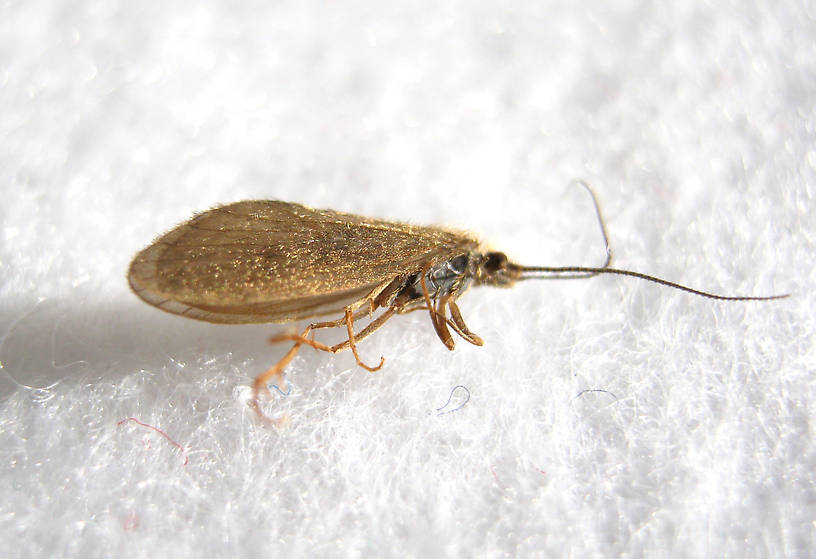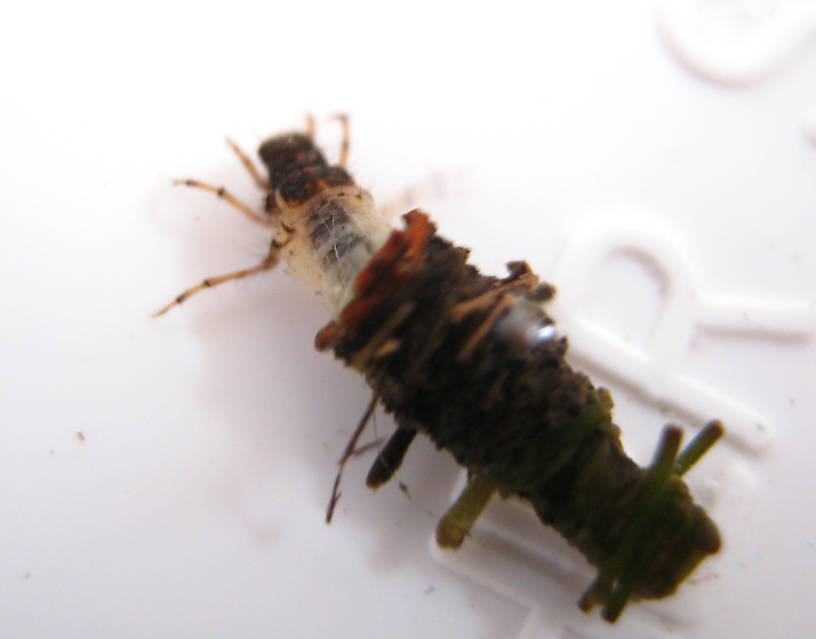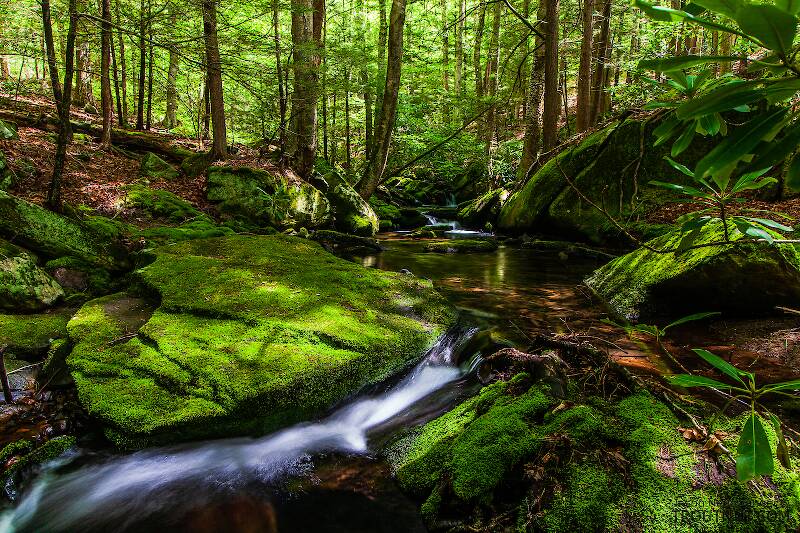
Hex Mayflies
Hexagenia limbata
The famous nocturnal Hex hatch of the Midwest (and a few other lucky locations) stirs to the surface mythically large brown trout that only touch streamers for the rest of the year.
Featured on the forum

Nymphs of this species were fairly common in late-winter kick net samples from the upper Yakima River. Although I could not find a key to species of Zapada nymphs, a revision of the Nemouridae family by Baumann (1975) includes the following helpful sentence: "2 cervical gills on each side of midline, 1 arising inside and 1 outside of lateral cervical sclerites, usually single and elongate, sometimes constricted but with 3 or 4 branches arising beyond gill base in Zapada cinctipes." This specimen clearly has the branches and is within the range of that species.

Troutnut is a project started in 2003 by salmonid ecologist Jason "Troutnut" Neuswanger to help anglers and
fly tyers unabashedly embrace the entomological side of the sport. Learn more about Troutnut or
support the project for an enhanced experience here.
Little Brown Sedges
Like most common names,"Little Brown Sedge" can refer to more than one taxon. They're previewed below, along with 2 specimens. For more detail click through to the scientific names.
Caddisfly Family Lepidostomatidae
These are pretty much always called Little Brown Sedges.
See Lepidostoma for details. It's the only important genus in this family.
The other one, Theliopsyche, is an uncommon Eastern small stream genus.
The other one, Theliopsyche, is an uncommon Eastern small stream genus.

These specimens are still alive, just very cold, so the colors are accurate. I put them in the freezer for a bit to settle them down and overdid it a little:)

The photo of the specimen cased is alive. The photo of the uncased larva is the same specimen taken after it was preserved in its case. Unfortunately, there was a lot of pigment transfer making the specimen look olivaceous. In life it was grayish white as shown in the first photo.
See 8 more specimens...
Caddisfly Species Lepidostoma podagrum
These are pretty much always called Little Brown Sedges.
This species can be distinguished from other Lepidostoma by its swollen & scaly foretibiae. This is an important species in some western locales and often precipitates excellent angling opportunities. See the Lepidostoma genus hatch page for information on habitat and life history.

These specimens are still alive, just very cold, so the colors are accurate. I put them in the freezer for a bit to settle them down and overdid it a little:)

The photo of the specimen cased is alive. The photo of the uncased larva is the same specimen taken after it was preserved in its case. Unfortunately, there was a lot of pigment transfer making the specimen look olivaceous. In life it was grayish white as shown in the first photo.
See 2 more specimens...
Caddisfly Species Lepidostoma pluviale
These are often called Little Brown Sedges.
This is the most important Western species of Lepidostoma, and it can be very important to fly anglers.
References
- Baumann, Richard W. 1975. Revision of the Stonefly Family Nemouridae (plecoptera) : a Study Of The World Fauna At The Generic Level. Smithsonian Contributions to Zoology undef(211): 1-74.

